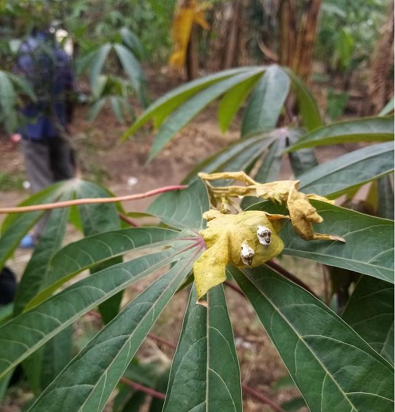African apefly in its pupae stage
The Ministry of Agriculture Animal Industry and Fisheries together with Kasese District local government with help of Makerere University entomologists have identified the suspected new pest that broke out in Kasese last week as African apefly –AAF.
Its scientific name is Spalgis lemolea.
The small multi-coloured insect, which is covered with powder and has a monkey- like-face was sighted in different plantations in Mpondwe-Lubiriha, parts of Karambi and Kinyamaseke Sub Counties.
Residents believed that it is an advance party of a swarm that has been ravaging plantations in neighbouring DR. Congo.
It was seen mostly on cassava and jatropha plants.
According to a circular released by both the ministry and Kasese District, AAF is neither a pest nor does it threaten food security. On the contrary, the monkey like insect can be beneficial since in its younger stage it eat some pests and as an adult, it can be a tourism attraction.
The experts explained that AAF does not feed on floral nectar, but instead the adult feeds on aphid honey dew, dung, sap and also sips from mud.
The larva stage feeds on other insects like aphids and mealybugs.
“The larva (carterpillar) stage of and AAF is carnivorous unlike other butterflies; It feeds on other small insects like aphids and mealybus that are a serious threat to crops,” part of the statement reads.
The ministry emphasized that the insect is beneficial in controlling aphids and mealybugs which if not controlled can cause a 100% yield loss.
It noted that the pupa hatch into beautiful butterflies that have the potential to boost tourism.
Ssenku Samulel Kimuli, the assistant chief administrative officer of Kasese, appealed to the local community to stop the spread of false information in regard to the consumption of greens linked to the AAF as this may affect the nutrition status of the community.
What is African Apefly?
The adult AAF is multi-coloured with orange wings on the interior, bordered with black colour on the dorsal surface and burnt-orange with darker spots edged with white on the ventral surface.
Because the adults are small in size, they spend most of their time in the locality of their aphid prey, have an erratic flight, and do not feed on flowers; they are not commonly seen.
-URN





